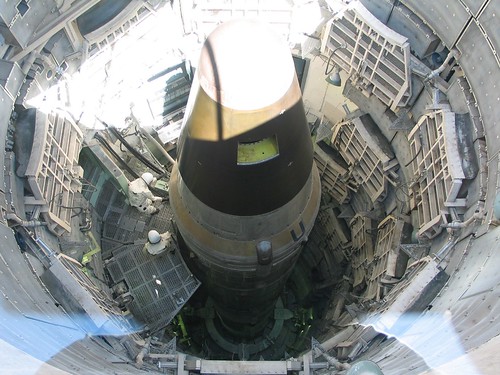I’m not going to make this point well, but let me try.
Now that we’ve recognized the long tail of violence and the “open source insurgency” and seen the Hezbollah missile threat, it’s hard not to imagine a growing threat from enemy or terrorist missiles. In short, as technology becomes cheaper, the weapons people can use against us become more complex.
Iran and North Korea have been developing and testing missiles for some time, but the 800 pound gorilla here is Russia.
US hubris lead to the downing of a U-2 spy plane in 1960 by a salvo of Russian S-75 Dvina surface to air missiles, revealing how advanced the Russian technology was.
Thus began a small conflict that pitted Russian missile designers against US aircraft designers, each trying to neutralize or circumvent the other’s technology.
So today, in the context of US missile defense plans and increasingly sophisticated adversaries, I wonder if we shouldn’t take a moment to think about where we’re going.
Here are some facts: our missile defense system tests have yet to show any success, and those who know are saying it’s a losing battle.
Add to that Russian pride in their recently tested Topol-M missile, designed “to subdue USA’s $50-billion air defense.”
“[T]he missile performs unpredictable flight maneuvers,” making interception impossible. “The successful test launch of the Topol-M missile has proved that the up-to-date Russian warhead is capable of subduing the USA’s air defense, Russian military specialists say.”
The Topol-M test was performed in early 2006 in central Kazakhstan. Western response was largely silent, with two exceptions. The Bulletin of the Atomic Scientists noted:
As we predicted two years ago, the emerging U.S. antiballistic missile defense system has provoked a direct Russian response. Missile defense appears to be a major part of Russia’s decision to retain multiple-warhead ICBMs and to develop new weapons capabilities.
And the British American Security Information Council‘s Missile Defense Update remarked:
Russia [has] successfully developed and tested a new generation of intercontinental ballistic missiles (ICBMs) with multi-targeted independent vehicle (MIRV) warheads that could penetrate any ABM system in the world, including the US system.
So where does this end? Where is our time and money best spent? Should we build a largely ineffective missile shield, against which our adversaries will build ever more sophisticated (and deadly) missiles?
